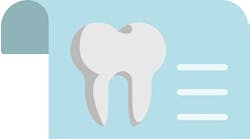Over the last decade, the dental industry has undergone evolution and consolidation. Solo and group practices are affiliating with dental service organizations (DSOs) at a record pace. Nondentist investors are buying nonclinical assets, such as dental equipment, leases, and intellectual property, and contractually affiliating dental practices into a conventional DSO structure. In a conventional DSO structure, the DSO generally owns the dental equipment and intellectual property, holds the leases, and employs all of the nonclinical employees of the contractually affiliated practices.
However, over the last several years, there have been a growing number of solo and group practices that are not ready to affiliate with conventional DSOs because they have wanted to maintain their business autonomy. As a result, a number of alternative DSO structures have emerged in the marketplace. Alternative DSO structures offer benefits similar to those of conventional DSOs and allow dentists to focus on patients while businesspeople tackle the nonclinical side of operating a dental practice. This article briefly surveys the universe of available alternative DSO structures.
Strategic affiliate programs
Strategic affiliate programs allow practices to consider the conventional DSO model without making a complete and permanent commitment to a full-blown conventional DSO relationship. There are many strategic partnership opportunities for a practice owner to sign onto a limited suite of nonclinical support services in exchange for a fee. Unlike a conventional DSO model, the practice maintains the equipment, leases, and any intellectual property under this model. The nonclinical employees also remain employed at the practice level.
A practice seeking advertising, call center, human resources, billing, and collecting services typically pays a management fee of about 3% to 6% of gross revenues. Strategic affiliate contractual provisions typically include a more limited range of nonclinical administrative support services than a practice would receive in a full-blown conventional DSO model.
One or either party may convert into a full-blown conventional DSO relationship if the results of the strategic affiliate relationship are favorable. Usually, the DSO has the option to convert the practice into a full-blown DSO model if certain financial metrics are met. From a DSO perspective, a strategic affiliate program may allow the DSO to “get a foot in the doorway” of a promising dental office with the goal of one day converting the office into a conventional DSO model. Practice owners who are on the fence about converting into a conventional DSO model can select the strategic affiliate structures. Essentially, this structure allows for a gradual, more controlled, and deliberate transition into a conventional DSO model.
Noncaptive DSOs
Practices can also consider the noncaptive DSO structure. Noncaptive DSO contractual arrangements offer certain nonclinical administrative support services in exchange for 3% to 6% of gross revenues as the management fee. Similar to the strategic affiliate programs, the equipment, lease, intellectual property, and nonclinical employees remain at the practice, and the noncaptive DSO model typically provides a more limited suite of nonclinical and support services.
Noncaptive DSO structures also attract dentists who desire complete business autonomy. Under a noncaptive DSO model, the dental practice owner can maintain complete business autonomy while benefiting from certain nonclinical support services. Generally, the contractual arrangement in a noncaptive DSO model provides that the practice can cancel the nonclinical services at any time with reasonable notice. Unlike long-term DSO contractual commitments, noncaptive DSO arrangements can be terminated, usually within 30 to 90 days’ notice.
Loosely affiliated dental organizations
Practices are also forming loosely affiliated dental organizations (LADOs) on an integrated or nonintegrated basis. Under this model, otherwise separate and unrelated practices band together to negotiate volume-based discounts with vendors and preferred rates with providers. In an integrated LADO, the practices create a DSO entity to provide centralized management services. In a nonintegrated LADO, the practices still band together but provide little to no centralized support services. The practices in a nonintegrated LADO usually band together to immediately go to market and participate in an equity deal.
The integrated LADO structure provides a wide range of nonclinical services in exchange for fees generally equal to or slightly above the costs of those services. Once the practices integrate the management platform, the goal becomes taking the organization to market. A fully integrated LADO will generally receive a much higher multiple than what could typically be achieved from a solo or small group practice asset sale.
A nonintegrated LADO will generally receive a higher multiple than a solo or small group practice asset sale but not nearly as high a multiple as an integrated LADO model. However, a fully integrated LADO requires time, money, and execution. Some practices lack the time, money, and resources to integrate, yet they are still eager to participate in an equity transaction, rather than take a year or two to integrate. In these cases, a nonintegrated LADO is a viable option.
In both integrated and nonintegrated LADO models, equipment, leases, intellectual property, and nonclinical employees all remain at the practice level and the practice owners retain almost complete business autonomy.
If properly executed, the LADO structure can provide higher multiples upon selling the assets of the practices. Using an LADO structure saves buyers time, costs, trouble, and the inconvenience of several individual transactions.
Dental franchises
An interesting observation has been the return of dental franchise opportunities. A successful dental franchise will license trademarks and exclusive territories without any clinical control over the practice. The dental franchisor can leverage brand benefits of the entire organization. Individual operators come together under one brand and offer benefits that level the playing field between them and larger corporate organizations.
Operators enjoy saving money on supplies and services through group negotiating power. The franchise may negotiate volume-based discounts for dental supplies. One of the most tangible benefits of a dental franchise is using group negotiating power to evaluate and purchase products that meet the specific needs of each practice location.
In the past, dental franchise models have failed after exerting unlawful control over the clinical aspects of practices. Traditional franchisors are allowed to exert complete control over the franchisee by setting all protocols for delivering the product to the consumer. However, this model does not work in dentistry because the applicable regulations prohibit nondentists from influencing or controlling the practice of dentistry or interfering with the independent professional judgment of the practice owner. For instance, a nondentist cannot control a dental office’s hours, prices, advertising and marketing, selection of vendors, or clinical protocols. A few early dental franchises got into significant regulatory trouble for trying to control the operation of the franchisee dental practices. To remain compliant, dental franchisors cannot dictate clinical decisions or interfere with the independent professional judgment of the practice owner. Regulatory issues entangling dental franchises are common and sometimes difficult to overcome. However, a few successful dental franchises have emerged that allow the franchisee to maintain complete clinical autonomy.
Buying groups
Under the buying groups model, there is a contractual purchasing relationship among member practices. The buying groups structure leverages the collective bargaining power of a group of individuals to obtain volume-based discounts on products and services for profitable practices. By combining several practices, operators can maintain complete business autonomy and obtain prices on products and services similar to those offered to larger group dental practices.
Unlike LADOs, there is no strategic plan beyond simply negotiating volume-based discounts. Groups under this model do not have broader plans to sell in the future and therefore may be missing out on a significant business opportunity.
Direct-to-consumer DSOs
Direct-to-consumer DSOs generally provide specialty dental services such as implants, dentures, or orthodontics. Direct-to-consumer DSOs have bypassed traditional patient referral channels for specialty services. Direct-to-consumer DSOs advertise directly to the consumer on behalf of their affiliated practices. These models can operate with both brick-and-mortar practices and with non-brick-and-mortar practices, depending on the type of dental services offered to patients.
The brick-and-mortar versions of these practices utilize direct-to-consumer national advertising plans and programs to attract patients. An example of a brick-and-mortar direct-to-consumer DSO model is when a consumer sees a television advertisement, browses social media, or hears a radio advertisement from a direct-to-consumer DSO that is being run on behalf of the DSO’s affiliated practices. The consumer contacts a centralized patient call center (operated by the DSO on behalf of its affiliated practices), where an employee makes arrangements for the patient to see the treating dentist at a brick-and-mortar practice convenient to the patient.
Non-brick-and-mortar models use direct-to-consumer national advertising plans to attract patients to teledentistry and telehealth platforms that are owned and operated by doctors but managed by DSOs. These platforms overcome geographic barriers to provide innovative patient treatment. Non-brick-and-mortar models are changing the face of dentistry by providing patients with greater access to dentistry at better price points than traditional brick-and-mortar dentistry. Compliance with applicable federal and state law, regulations, and licensure is crucial for a successful non-brick-and-mortar model.
Conclusion
While there has been an aggressive campaign to solicit practice owners into joining these various alternative DSO structures, it is yet to be seen what overall impact these alternative DSO structures will have on the industry’s consolidation toward the conventional DSO model. Some of these alternative structures are clearly here to stay, while others may be just a temporary way station to conversion into a full-blown conventional DSO model. Only time will tell.
But one thing is clear: Many practice owners are craving DSO structures that are different from conventional structures and allow them to maintain greater business autonomy or practice under innovative teledentistry models. It is unclear whether it is still feasible, or even desirable, for solo and small group practice owners to maintain complete business autonomy in the current DSO marketplace. Time and time again, it has been proven that the DSO model lowers overhead costs, increases the practice’s operational efficiencies, and generally provides greater access to care (particularly for underserved patient populations), often at lower price points. Nevertheless, alternative DSO models are very interesting, are continuing to evolve, and are worth watching very closely over the next few years.
Brian A. Colao is the director of Dykema’s dental service organizations industry group. He is widely regarded as one of the foremost authorities in the United States on DSO formation, DSO business structures, DSO-related mergers and acquisitions, and regulatory compliance for DSOs.
Victoria Bahrami, JD, is an associate attorney in Dykema’s Dallas office and focuses her practice on corporate finance matters. She is a member of Dykema’s dental service organizations industry group. Send email to [email protected].






